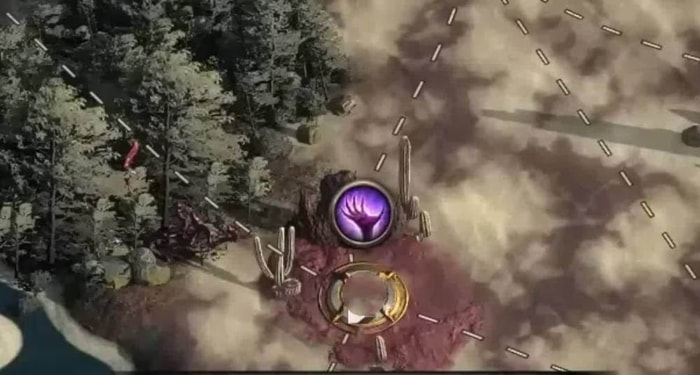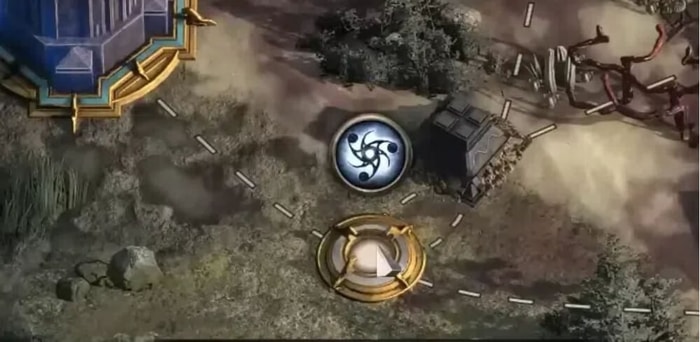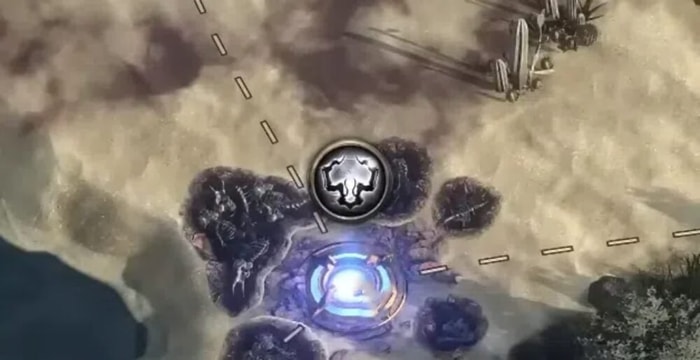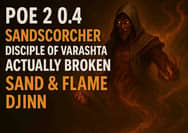Crafting and upgrading items in Path of Exile 2 can be complex, particularly at the endgame. With various crafting systems, each has unique rewards that lead to new items and crafting materials. Today, I'll provide a comprehensive endgame crafting guide to help you create better gear and achieve your best-in-slot items. Now, let’s dive straight in!
Basic Crafting
Basic crafting starts with white (normal) items, which you can upgrade using Orbs. Use an Orb of Transmutation to turn a normal item into a magic item, then apply an Orb of Augmentation to add a second affix. From there, you can use a Regal Orb to upgrade the item to a rare (yellow) item. Exalted Orbs can then be used to add additional affixes to improve the item further.
Finding Base Items
Finding a good base item is crucial to crafting high-quality gear in PoE 2. Here are the key steps:
1. Find a Good Base Item:
• Match the item's level to your character's level (e.g., if you're level 87, look for items around level 80-87).
• Ensure the item has a good implicit affix (e.g., elemental resistances on a ring).
2. Check Tier Rolls:
• Use 'ALT' (or thumbstick on a controller) to view the tiers of affixes.
• Higher tiers provide better stats.
3. Consider Build Benefits:
• Look for attributes that benefit your build (e.g., high physical damage on weapons, high movement speed on boots, levels to spells).
4. Endgame Drops:
• Higher-tier drops in the endgame have better initial rolls, making them ideal for crafting.
Breach Mechanics
Breaches are the first significant endgame system in PoE 2, which are crucial for endgame gearing as they reward Breach Rings and Catalysts. If you haven't done a breach before, once you reach the endgame and have your map device, look for maps with clasping purple hands, indicating a breach. When you enter the map, find these hand icons and approach them. This will open a large circle, and monsters will rush out. These monsters can drop several items, including Catalysts and Breach Rings.

Breach Catalysts
Catalysts are particularly important:
• Catalysts enhance the quality of items, improving specific modifiers (e.g., physical modifiers on rings or amulets).
• Quality upgrades the base stats of items (e.g., evasion rating on boots). Generally, quality can go up to 20% on any item.
• Different catalysts enhance different attributes (e.g., life, physical, chaos, cold). For example, an ice monk build can improve cold damage using appropriate catalysts.
Example:
Mana Modifier: A ring with a mana modifier can increase its quality using a Mana catalyst. For instance, a tier 12 roll might have 179 max mana, which can be increased to 209, 213, and finally 214 max mana with a Mana catalyst. This significantly boosts specific attributes, optimizing your build.
Breach Rings
Breach rings are special endgame items obtained from Breaches, and they can be crafted into some of the best gear in the game. With up to 50% quality (compared to the usual 20%), these rings can significantly boost your stats. If you're optimizing your build for a specific attribute like mana, you can enhance the Breach ring by adding that attribute using catalysts
Essence Crafting
Essences play a key role in creating strong endgame items by ensuring a desirable first roll on a base item. They allow you to tailor the first modifier on an item, making them a valuable tool for crafting. You can find Essences by defeating frozen monsters encountered during the campaign. There are two types of Essences: basic and greater, with greater Essences being rarer.
When turning an item from normal to magic, Essences allows you to select the first modifier, unlike an Orb of Transmutation, which generates a random modifier. For example, using an Essence on a normal Breach Ring (white quality) can guarantee specific modifiers, such as caster stats or mana stats, reducing the randomness and focusing on desirable attributes. This controlled RNG makes it easier to craft strong endgame items, as you can target specific categories like mana, physical, or defense.
Essences are particularly useful when crafting from scratch, especially for items like breach rings. Good starting points for further crafting include modifiers like 18% cast speed or tier 12 mana (169 max mana).
Expedition System
The next big upgrade system comes from Expeditions. Expeditions have a unique system that allows us to tailor stats on an item. On your map device, Expeditions are marked by a swirly symbol with three dots. At the Expedition site, you'll encounter a person at a stall. You'll place charges around to reveal chests and monsters, which drop items, artifacts, and exotic coinage.

You can use artifacts and coinage to interact with Expedition NPCs like Tujen (belts and rings), Gwennen (weapons), and Rog (armor). These NPCs sell basic items and allow you to refresh their inventory with exotic coinage. For example, refreshing Rog’s inventory might reveal new armor pieces. Once you find an item you like, you can purchase it and then roll or remove its modifiers.
You can roll prefixes and suffixes on items using materials found in Expeditions instead of traditional crafting materials. For example, you might find boots with desirable stats like 30% movement speed, life, and resistances. You can keep or reroll these stats, though rerolling may increase the cost. This system allows for significant customization, despite relying heavily on RNG, and can yield excellent endgame items.
Chance Orbs
Chance Orbs are high-risk, high-reward crafting tools. They have the potential to upgrade a normal item to a unique item, but the success rate is low, making it a gamble. Use Chance Orbs strategically if you're aiming for specific uniques, but be prepared for the possibility of failure.
Chaos Crafting
Corrupting an item with Vaal Orbs can result in very good, very bad, or neutral outcomes, making it a gamble. Instead of relying purely on RNG with Vaal Orbs, you can participate in the Trial of Chaos, an endgame challenge with multiple floors and various challenges. At the end of each trial, you can choose to leave or continue. You'll receive corrupted items as rewards, giving you a chance to obtain powerful items without risking your own gear.
Additionally, Trials of Chaos reward Soul Cores, which function like runes in your item sockets. These Soul Cores provide unique and powerful bonuses, such as increased spirit, rarity, crit damage, or elemental resistances. They're highly sought after and can be worth a lot on the exchange, sometimes fetching hundreds of Exalted Orbs. This makes running Trials of Chaos a rewarding endeavor.
Ritual Omens
Rituals are another essential endgame crafting mechanic, offering random rewards. They are marked by red icons on the map. You'll find a circle in which you defeat monsters, earning tribute that can be used to get items. The items offered are random and can range from very good to quite poor. One notable item from rituals is Omens, which significantly change crafting and are aimed at players seeking to create perfect items.

Some Omens in your inventory affect battle by providing benefits like restoring your energy shield when you reach low life. Others impact crafting, such as ensuring your next exalted orb adds only prefix modifiers, which is useful for precise gear tailoring. By running multiple rituals, you can use your tribute to obtain these Omens or purchase them from the exchange. For example, an Omen might ensure chaos orbs remove only suffix modifiers, allowing for more controlled crafting.
Omens are highly sought after for super endgame, min-maxing scenarios. Although not as commonly run as breaches, rituals offer valuable opportunities for those willing to invest the time.
Delirium Upgrades
Deliriums are crucial for upgrading gear. On your map, Delirium markers look like two pincers or machinery. Running a Delirium involves entering a map, finding a big mirror near the portal, and passing through it to fight Delirium monsters. A counter at the bottom left tracks how many monsters you defeat, and the more you defeat, the more Delirium drops you get. These drops resemble emotions like guilt, greed, paranoia, and envy, and are used in a significant endgame crafting system.

Crafting with Delirium Drops - Passive Tree Nodes: If you need a node far from your current path, you can craft it onto your amulet using Delirium drops. For example, the "Conservative Castic" node, which increases mana regen and reduces mana skill costs, can be crafted onto your amulet using distilled emotions. Press 'alt' (or thumbstick on a controller) to see the required Delirium drops, then place them in your inventory and craft the desired node onto your amulet.
Delirium Modifiers - Waystones: Use Delirium drops to add a Delirium modifier to waystones, creating a chance for Delirium drops even in non-Delirium maps. This is useful for farming rare and sought-after emotions that are harder to find.
This guide covers the broad aspects of all endgame systems in Path of Exile 2, providing enough detail for those unfamiliar with them.



